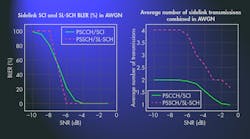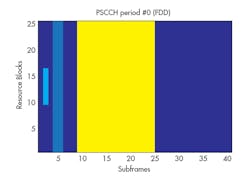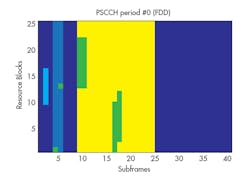Download this article in PDF format.
Release 12 of the 3rd Generation Partnership Project (3GPP) LTE standard introduced a device-to-device (D2D) interface aimed primarily at allowing LTE to support public safety communication systems. A key driver for this LTE feature is the First Responder Network Authority (FirstNet), established by the U.S. government. This organization is tasked with creating and maintaining a single high-speed nationwide wireless broadband network dedicated to public safety.
It was decided that this public safety network would be based on LTE technology. As a result of this decision, a number of U.S. organizations engaged with 3GPP and its members with a view to extend the LTE standard to support features required for public safety. One such feature, for example, is in regard to communication within out-of-coverage scenarios.
The first results of this work are standardized as the Proximity Services (ProSe) features in LTE Release 12. This work continues to evolve in Release 13 and beyond. There is now worldwide backing, from the likes of the TETRA and Critical Communications Association (TCCA), for the use of LTE in next-generation critical communication systems as a replacement for TETRA and P25.
ProSe introduced sidelink connectivity, a new interface with a set of transport and physical channels with associated physical signal. Resource pools define physical resources in time and frequency that carry D2D control and traffic data. These resource pools, which are a new concept in the LTE standard, are key to understanding how ProSe traffic can coexist with legacy LTE traffic.
In this article, we discuss some of the main features of D2D in LTE Release 12 and focus on the concept of resource pools and sidelink transmission. The MathWorks LTE System Toolbox is utilized to present ProSe performance results.
Direct Discovery vs. Direct Communication
D2D communication offers a number of advantages over network-based communication. These advantages include shorter latency, decreased network traffic, power savings, and a fallback system in the case of network failure.
Two features are specified as part of ProSe in Release 12:
- Direct discovery: This is used in commercial applications like targeted advertising. Direct discovery enables UEs to advertise and discover content of interest in their immediate surroundings (up to a few hundred meters), or transfer data between LTE-enabled devices.
- Direct communication: This is currently reserved for public safety usage.
This article focuses exclusively on direct communication as defined for public safety usage.
Several scenarios are defined for coverage (Fig. 1):
- UE in coverage
- UE in partial coverage
- UE out of coverage
When at least one of the UEs is either in coverage or in partial coverage, the LTE network may play a part in coordinating transmission between nearby UEs. On the other hand, one new aspect of direct communication allows LTE devices to communicate without the assistance of the network, as in the out-of-coverage scenario.
Sidelink Connectivity
One of the first decisions the LTE standards body had to make was whether to reuse some of the same physical resources as the downlink or uplink. It was decided that the UE shall transmit on uplink LTE frequencies, using single-carrier frequency division multiple access (SC-FDMA) modulation and resources from the uplink. To explain how the eNodeB or UE selects those uplink resources, however, we first need to introduce resource pools and some of the sidelink channels.
Release 12 of the LTE standard defines sidelink as a new interface with a set of transport and physical channels, with associated physical signals to support deployment of the D2D direct communication and direct discovery features.
Some of the sidelink physical channels include:
- Physical Sidelink Shared Channel (PSSCH): This channel carries sidelink data. Sidelink transmission is defined as a one-to-many scheme, meaning that the data is to be received by multiple UEs that belong to a group.
- Physical Sidelink Control Channel (PSCCH): This channel is analogous to the traditional Physical Downlink Control Channel (PDCCH) in that it carries the sidelink control information (SCI) message, which contains information about the resource allocation of the physical sidelink shared channel.
The following sidelink physical signals are also defined:
- Demodulation reference signals: These symbols are used for channel estimation.
- Primary and Secondary Sidelink Synchronization Signals (PSSS and SSSS): These synchronization signals are needed to synchronize UEs that are out of coverage and therefore cannot use the primary and secondary synchronization signals emitted by the eNodeB.
Resource Pools
A resource pool is a set of resources defined by a subset of subframes and resource blocks available within these subframes. The block of resources is repeated with a period, known as the PSCCH period, which can range from 40 to 320 ms. A resource pool is designed to set aside physical resources for transmission of sidelink data (including associated control).
3GPP TS 36.101 defines examples of resource pool settings. We consider the PSCCH period defined in Annex A.7.2 Table 7.2.1-1 for 5-MHz bandwidth.
LTE System Toolbox lets users model and visualize this setting with just three lines of code:
- params = PSCCHPeriod.defaultConfig(1,‘5MHz’);
- period = PSCCHPeriod(params);
- displayPeriod(period);
Figure 2 shows a PSCCH period for the default 5-MHz setting.
Transmission and Modulation
Both PSCCH and PSSCH use resources selected from the resource pools. The PSCCH is transmitted using quadrature phase-shift-keying (QPSK) modulation and a very low coding rate. It is sent twice in two different subframes in order to further increase the signal-to-noise ratio (SNR) and, thereby, the probability of correct demodulation.
The PSSCH is transmitted using either QPSK or 16-state quadrature amplitude modulation (16-QAM), and one of the allowed coding rates. This modulation and coding scheme (MCS) is included in the sidelink control information carried by the PSCCH.
Each transport block is sent four times with a fixed redundancy version sequence in order to let the receiver(s) use soft combining. Note that PSSCH carries data meant to be received by a group of UEs, as opposed to a single UE. Therefore, there cannot be a closed-loop HARQ scheme. Rather, all transmissions are always repeated four times, although any individual UE may successfully decode a transport block in fewer than four transmissions.
The PSCCH and PSSCH are mapped to physical resources included in the resource pools described earlier, using one of two strategies that correspond to the two transmission modes defined in LTE Release 12:
- Transmission mode 1 (network-directed): When the UE is in coverage, the eNodeB can dynamically assign resources to the UE for D2D transmission. In this transmission mode, the eNodeB can guarantee no collision between any sidelink transmission and any uplink transmission, or between sidelink transmissions.
- Transmission mode 2 (UE-selected): The UE selects which resources to use for transmission. Transmission mode 2 is applicable to all scenarios, in coverage and out of coverage. The resources are selected at random to minimize the collision risk.
Sidelink Performance
We now want to illustrate a concrete example of a resource pool configuration and how to determine the performance of sidelink control and data channels using LTE System Toolbox.
Here, we assume transmission mode 2, meaning that the transmitting UE must randomly select suitable resources from a predefined resource pool. Note that the UE could be in coverage or out of coverage.
The main steps are:
- Set up a resource pool according to predefined parameters (*).
- Create an SCI message. This message carries all necessary pieces of information, including resource allocation for the PSSCH and modulation and coding scheme.
- Create a PSSCH transport block.
- Transmit the SCFDMA modulated signal over a channel.
- Demodulate the signal.
- Blindly detect the SCI by trying out all possible PSCCH resources.
- Once the SCI is decoded, extract the relevant resource blocks where PSSCH is located.
- Decode the PSSCH over up to four retransmissions (open-loop HARQ).
The simulation determines the error rate on PSCCH and PSSCH decoding. Here, we chose an MCS value of 11, which corresponds to 16-QAM.
Figure 3 shows which resources were actually picked by the UE for a particular subframe for PSCCH and PSSCH. They are highlighted in green.
Observe the two PSCCH and four PSSCH transmissions in different subframes that belong to their respective resource pools. The PSCCH transmissions occupy one physical resource block each (1 and 13) in the first and second subframes of the PSCCH resource pool (dark blue). PSSCH transmission occupies contiguous physical resource blocks in two groups of two consecutive subframes within the (yellow) PSSCH resource pool: PRBs 13 through 22, 13 through 22, 1 through 10, and 3 through 12.
Finally, the block error rate (BLER) for both PSCCH and PSSCH are shown as a function of the SNR, as well as the number of retransmissions that were combined (Fig. 4). Combining stops when the channel is successfully decoded or the maximum number of transmissions is reached (2 for PSCCH, 4 for PSSCH).
For low SNRs, the receiver always needs both PSCCH and all four PSSCH transmissions. For -10 dB, we can see that the BLER is 100%. Thus, even with all retransmissions, the receiver cannot correctly decode either channel with this weak signal. Conversely, at -1 dB, the BLER is always 0, meaning that both the SCI and Sidelink Shared Channel (SL-SCH) are correctly decoded, after an average of 1 and 1.7 transmissions, respectively.
Conclusion
The LTE standard is constantly evolving and introducing new capabilities supported by new features. Proximity services are one of the main recent additions to the LTE standard, with applications in both public safety and commercial deployments. Furthermore, LTE Release 14 may add a vehicle-to-vehicle (V2V) and vehicle-to-everything (V2X) capability based on the sidelink with suitable modifications to accommodate specific requirements, such as low latency and high reliability.
Graham Freeland, Consultant Software Engineer
Marc Barberis, Principal Application Engineer
*TS 36.101 Table 12.2.1-1 (Sidelink UE 2, reference measurement channel CC.3 FDD for the control channel, CD.1 FDD for the shared channel) and Annex A.7.2.1-1 (Configuration #1-FDD).





